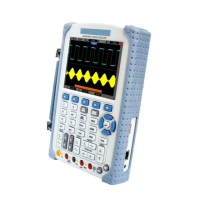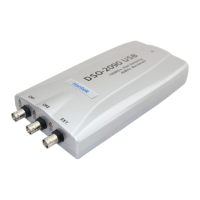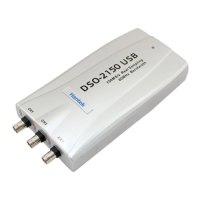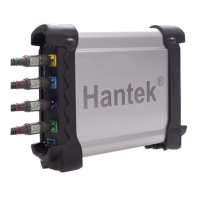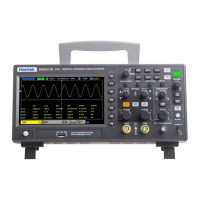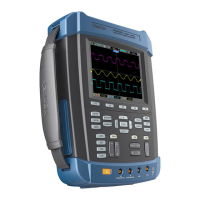Basic Operation
DSO1000B Series HandHeld Oscilloscope User Manual 25
DC: Passes all components of the signal.
HF Reject: Attenuates the high-frequency components
above 80kHz.
LF Reject: Blocks DC components and attenuates the
low-frequency components below 8kHz.
NOTE: Trigger coupling only affects the signal passed through the trigger system. It does
not affect the bandwidth or coupling of the signal displayed on the screen.
Video Trigger
With Video highlighted, an NTSC, PAL or SECAM
standard video signal will be triggered. The trigger
coupling is preset to AC.
Select the input source as the trigger signal.
Polarity
Normal: Triggers on the negative edge of the sync pulse.
Inverted: Triggers on the positive edge of the sync pulse.
Line Number
Odd Field
Even Field
Choose a proper video sync. When selecting Line
Number for the Sync option, you may use the User
Select it to specify a line number.
Standard
Choose a video standard for sync and line number
count.
Note: When you choose Normal Polarity, the trigger always occurs on negative-going sync
pulses. If the video signal contains positive-going sync pulses, use the Inverted Polarity
option.
Pulse Width Trigger
You can use it to trigger on aberrant pulses.
With Pulse highlighted, the trigger occurs on pulses that
meet the trigger condition (defined by the Source, When
and Set Pulse Width options).
Select the input source as the trigger signal.
When
Select the trigger condition.
20ns to 10.0sec With Set Pulse Width highlighted, set the pulse width.
Polarity
Select to trigger on positive or negative pulses.
Mode
Select the type of trigger. The Normal mode is best for
most pulse width trigger applications.
Select the components of the trigger signal applied to the
trigger circuit.
Switch between submenu pages.

